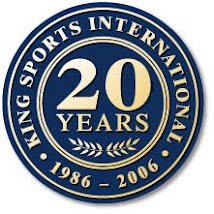I recently visited the dentist for work on my teeth. At a point in the surgery, under a local anaesthetic, I began coughing and was aware of a sensation affecting first my head, then my whole body. I realized that the dentist had just inserted a compound in my teeth, and I intuitively felt I was reacting negatively to this compound. I was quicker to reach this conclusion due to the work I done over the years refining my reading of intuitive feelings.
I immediately raised this possibility with the dentist, to which he assured me was not possible because the compound was a naturally occurring substance. At the end the treatment my symptoms had not abated, and I raised this possibility that my body was reacting negatively once again. I raised this again for a third time in the waiting room post the treatment, whilst paying for the service. On all three occasions I was told it can’t be, and given the same reasons – it was a natural substance and no-one has eve reacted poorly to it.
Within hours I was totally incapacitated in bed, unable to work, struggling to function. By the end of the day I was back at the dental surgery, asking them to remove the substance, which they did. Almost immediately the acute symptoms lifted, with the residual effects affecting me for the next day or so.
In the western world approach to medicine, dentistry and related fields there is no provision for assessing the potential impacts of a treatment before applying it. And feedback such as what I provided is typically disregarded.
These professions, at least as measured by the history of professional education, are far older than physical preparation, therefore I should have no surprise that in physical preparation professional development there is also no provision for seeking guidance in any format about the potential impact of any given training stimulus before it is applied. The ability to do so is virtually unheard of, and those who professional and commercial values would be at risk of being devalued if the masses were to rapidly accept the possibility that it could be done are not about to allow this approach to be promoted and endorsed.
At every level of program design and training application in the training process there is the need and opportunity to do exactly this – gain rapid information to guide each and every decision about what may be the potential impact of applying any given stimulus. This is something we teach to the coaches in the KSI Coaching Program. It can be done, we believe should be done, and we do it.
Keeping in mind my belief that strength training has the most powerful ability to change the structure and function of the body per unit time than any other of the physical quality trainings, you may appreciate my concern of how strength training exercises, methods and other loading parameters are applied in the complete absence of any of these predeterminations.
Essentially, within weeks, a human’s life can be changed forever for the better or worse – and I suggest for the overwhelming majority of time for the worse. I believe that few who make and influence these training decisions have any real world insights into the long-term adaptations that result from the stimulus they are blindly applying.
This is not good enough. It is not optimal. The fact that this non-discerning approach re potential impacts of training on the body short, medium and long term) is ignored by the masses is not cause to continue down this path. It is, for me, cause for massive concern and motive to change, to learn how to do it better.
Subscribe to:
Posts (Atom)



